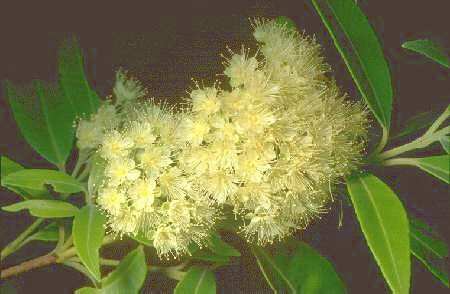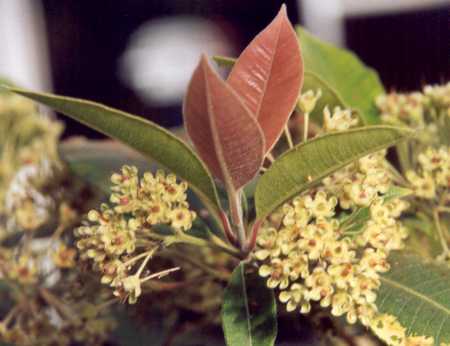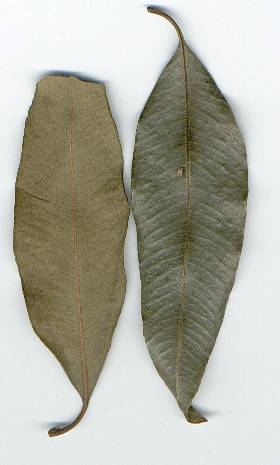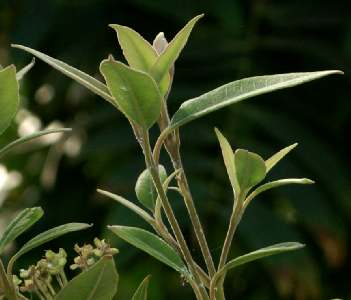
|
| Lemon myrtle, branch with flowers |
Australian cuisine is young and evolving rapidly;
native Australian spices play an important
rôle in defining a kind of national character
(see also Tasmanian pepper). Lemon myrtle leaves are often used
to flavour poultry or sea food: Just one or two leaves give a special touch to
roasted chicken. Furthermore, lemon myrtle is popular for herbed vinegar (see dill), mayonnaise (see also tarragon) and vinaigrettes.
Australian cooks tend to use lemon myrtle leaves instead of kaffir lime leaves in recipes of South-East Asian
origin; yet lemon myrtle’s very pure scent does not go so well with the pungent
fish pastes and fish sauces of Thailand.

|
| Lemon myrtle shortly after bloom |
Fragrance of lemon or citrus type is quite common in the plant kingdom and found many different taxa not related at all. Besides lemon and its relatives (citron, lime, kaffir lime), lemon verbena, lemon balm, lemon grass and of course lemon myrtle have the purest lemon scent; lemon grass is distinguished by a most lovely hint of rose flowers. The essential oils of all these plants contain large fractions of terpenoid aldehydes.
Other plants, though citrus-like, cannot be said to mimic lemon fragrance; their essential oils are often dominated by terpene hydrocarbons. An example is ginger; sassafras, though weak, also belongs in this group. The strong-smelling Mexican herb epazote awakes rather different associations ranging from skunk sweat to lemon fragrance; southernwood is a very similar case. Some chemotypes of the chameleon plant display a strong aroma reminiscent to both lemon and orange. Another Vietnamese culinary herb, rice paddy herb, is characterized by a most unusual, tickling lemon flavour.
Lastly, lemon-scented varieties, relatives or cultivars of many common herbs
are known; examples include, but are not restricted to, basil, thyme,
savory,
perilla and eucalypt.




